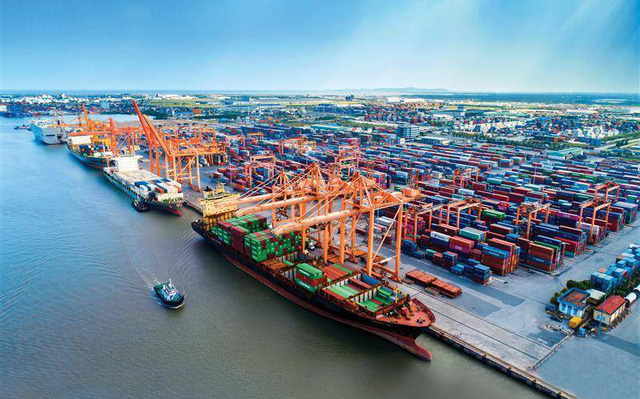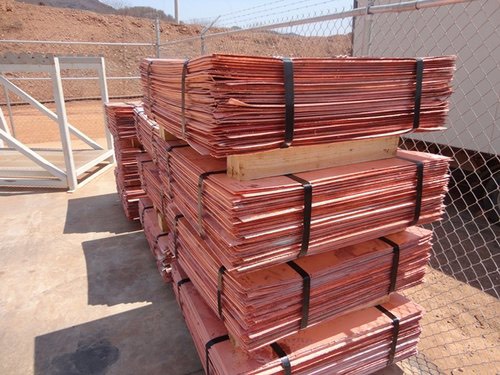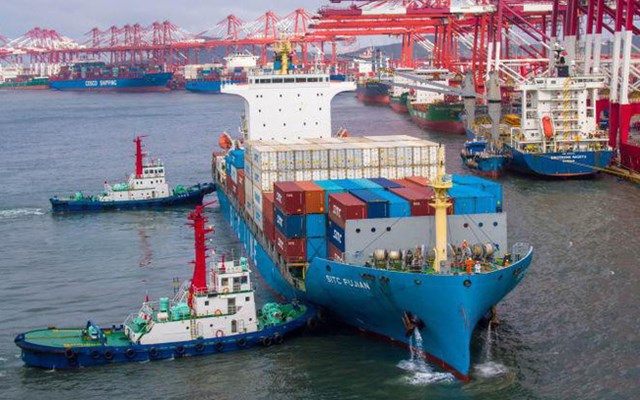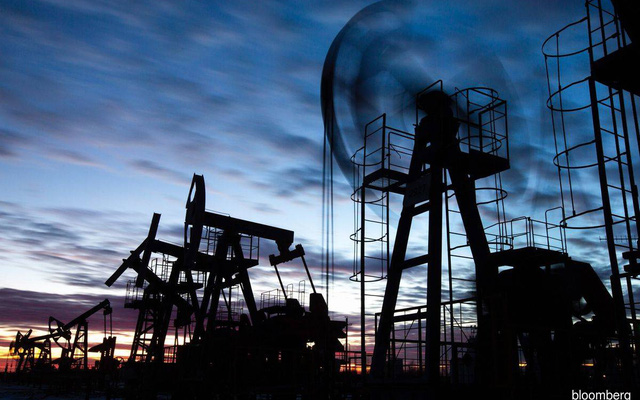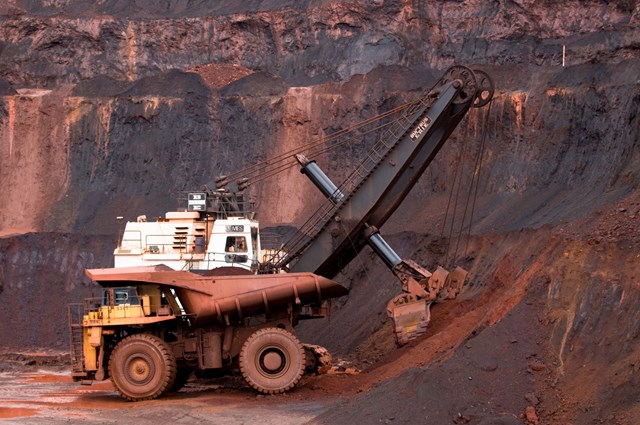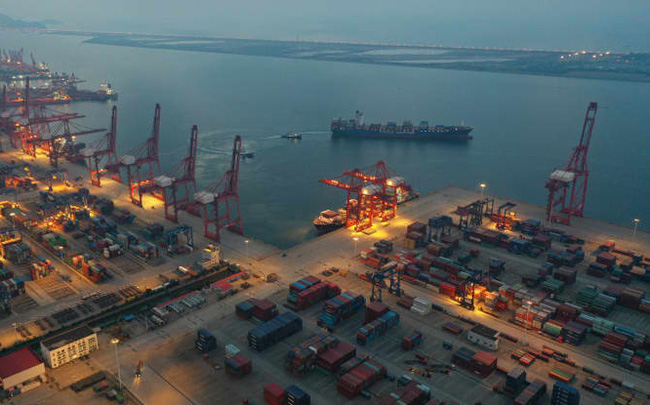The global energy industry is in a difficult situation as some provinces in China have to restrict electricity use, Europeans pay sky-high prices for liquefied natural gas, power plants in India. coal is about to run out, and the price of a gallon of gasoline in the US jumped to $3.25 on Friday (October 8) from just $1.72 in April.
As the global economy recovers and leaders prepare to host a landmark conference on climate change, an unexpected energy crisis hits the world, threatening supply chains. already constricted, stirring up geopolitical tensions and raising questions about whether the world is ready for a green energy revolution.
The economic recovery has almost stalled. Other influencing factors include an unusually cold European winter that drained reserves, a series of storms that forced the closure of US Gulf refineries, and the return of relations between China and Australia. So bad that Beijing stopped importing coal from Down Under, and calm weather in the North Sea has sharply reduced the output of wind turbines that generate electricity.
“The crisis spreads from one energy market to another,” said Daniel Yergin, author of “The New Map: Energy, Climate, and Conflict Between Nations.” “Governments are trying to set aside subsidies to avoid a huge political backlash,” and “There is widespread anxiety about what may or may not happen this winter, because What we can’t control is the weather.”
As global leaders prepare to gather in Glasgow, Scotland, later this month for a climate conference. Renewable energy advocates say the crisis shows a need to move away from coal, gas and oil as prices for these commodities spike, but contrarians say the opposite – that Wind and solar power have been tried and tested and have many downsides.
The United States, as an energy producer, has been trying to avoid the worst of the crisis even as gasoline prices have reached their highest levels since 2014. Gas prices in the US have also fallen. increased more than 180% over the past 12 months, to $5.9 per million BTU, the highest level since February 2014. Energy Secretary, Jennifer Granholm, on Wednesday (October 6) suggested the Biden administration should sell some of its strategic oil reserves, or ban crude exports.
In Europe, serious energy shortages began to emerge from the beginning of September, when gas reserves in the region were low but gas supplies were supplied from some countries, especially from Russia, Norway is restricted.
Gas prices skyrocketed as winter approached, prompting governments in the region to subsidize fuel bills and impose fuel price ceilings. In the past year alone, gas prices in the European market have increased by about 500%, to near record levels.
Europe runs out of gas reserves.
Europe is currently scrambling to find sources of coal and gas for its traditional power plants, in the face of the approaching winter and very low fuel reserves.
In this region, the situation in England is particularly dire. Britain these days is experiencing a severe shortage of petrol and diesel. Many companies in the country have been disrupted because there is no fuel, many gas stations have to close, gasoline retailers have collapsed, energy prices have skyrocketed, and consumers have panicked. The shortage of petrol in the UK is due to a number of unique causes, including a lack of petrol truck drivers after Brexit, but a similar story is happening in Europe and Asia.
The energy crisis has caused sharp disagreements within the European Union over how to respond to the crisis. Some Prime Ministers demanded that the bloc come up with a common solution to the crisis, while others blamed sweeping policies related to combating climate change and reducing emissions.
Energy analysts say Europe has moved away from fossil fuels too quickly before ensuring that sufficient renewable energy sources can meet demand in all situations, including emergencies. grant. Europe, they say, is caught in the middle of a transition that could last decades.
In Asia, the spot price of liquefied natural gas (LNG), measured in one million thermal units of An (mmBtu), has gone from under $5 in September 2020 to more than $56 this October.
When the Covid-19 pandemic first swept the world, in early 2020, world burning reserves were plentiful and prices were low. However, both gas and oil production fell sharply due to weakening economies, and inventories fell significantly during unusually cold weather.
When the Covid-19 pandemic first swept the world in early 2020, gas reserves were plentiful in Europe last winter.
This energy crisis first appeared in China, the world’s factory, when the global demand for Chinese products spiked and unexpectedly this year. Low coal stocks and China’s unofficial ban on Australian lignite mean that coal stocks cannot be replenished quickly. Power companies have turned to liquefied natural gas instead, sending gas prices soaring in line with coal prices.
As a result, two-thirds of regions across China were forced to limit electricity consumption, disrupting factory production and affecting daily life.
Some factories have closed completely. The power cut in China further disrupts international supply chains that have been disrupted by the pandemic. Factories have had to reduce output at a time when they normally ramp up for the holiday season, in December.
In Guangdong, China’s most populous province, the government banned the use of elevators in office buildings from the third floor and below, encouraging residents to use natural light as much as possible and demanding that Adjust the air conditioner to a higher temperature. Beijing and Shanghai have canceled their annual light shows during the Golden Week holiday that drags during the first week of October.
China’s thermal power plants are seriously short of coal.
The energy shortage is exacerbated by continued extreme weather. In northern China’s Shanxi province, 27 coal mines were closed last week due to flooding. In southern China’s Yunnan province, hydropower has been plagued by years of drought – as much as in California.
China’s main economic planning body, the National Development and Reform Commission, warned last week that restrictions on electricity use would last into next year.
A similar energy crisis is unfolding in Indiawhich saw an oversupply of electricity earlier this year when a devastating Covid-19 outbreak left factories idle and sugar empty street. Since then, economic activity in the world’s second-fastest-growing major economy has recovered faster than expected, and the thirst for electricity has increased accordingly.
Now, India is extremely concerned about power shortages and blackouts that can happen at any time, threatening to affect the recovering manufacturing sector and the lives of households during the monsoon season. festival, starting this month.
According to Indian officials, power plants have been unable to secure coal supplies and are hesitant to import due to high prices. The country’s Central Electricity Authority warned on Tuesday that nearly half of India’s thermal power plants – 63 out of 135 – have coal supplies equivalent to two days or less. , while stockpiles have been exhausted at 17 other facilities.
The energy crisis in some countries is considered to be likely to lead to many unpredictable consequences for the world economy, possibly causing inflation in the world, especially in the US, to worsen.
Experts estimate that if the temperature in the US drops deeply in the coming winter months, the demand for gas for heating will increase sharply, causing the country’s gas inventories to fall further, and the price will even higher. Rising gas prices could exacerbate inflation in the US.
Consumers in the country are paying more for virtually everything from used cars to gas and food. Escalating inflation is putting pressure on the US Federal Reserve (FED) to soon cut its asset purchase program and even raise interest rates from 2022.
Changes in monetary policy will have a strong impact on financial markets not only in the US but also globally.
For China, meanwhile, widespread energy shortages have forced factories to limit production and prompted economists to cut growth forecasts. Chinese manufacturers warn that strict measures to cut electricity consumption will lead to a decline in manufacturing output in the leading localities in the field. The power shortage crisis also increased pressure on the Chinese economy, at a time when the world’s second largest economy slowed down due to factors such as measures to control Covid-19 and cool down the real estate market. produce.
Meanwhile, in the face of record high gas and electricity prices, the meeting of the Finance Ministers of the Eurogroup on October 4 in Luxembourg also took place in Luxembourg. focused discussions on measures to help member countries cope with rising energy prices. Earlier, on September 22, the EU announced its readiness to adopt temporary measures by member states in the face of soaring energy prices.
Reference: Washingtonpost
T&G International Joint Stock Company
Address: 352 Hue Street, Le Dai Hanh Ward, Hai Ba Trung District, Hanoi
Hotline: 0345786803
Email: hrm@tginterjsc.com
Website: http://tginternationaljsc.com






